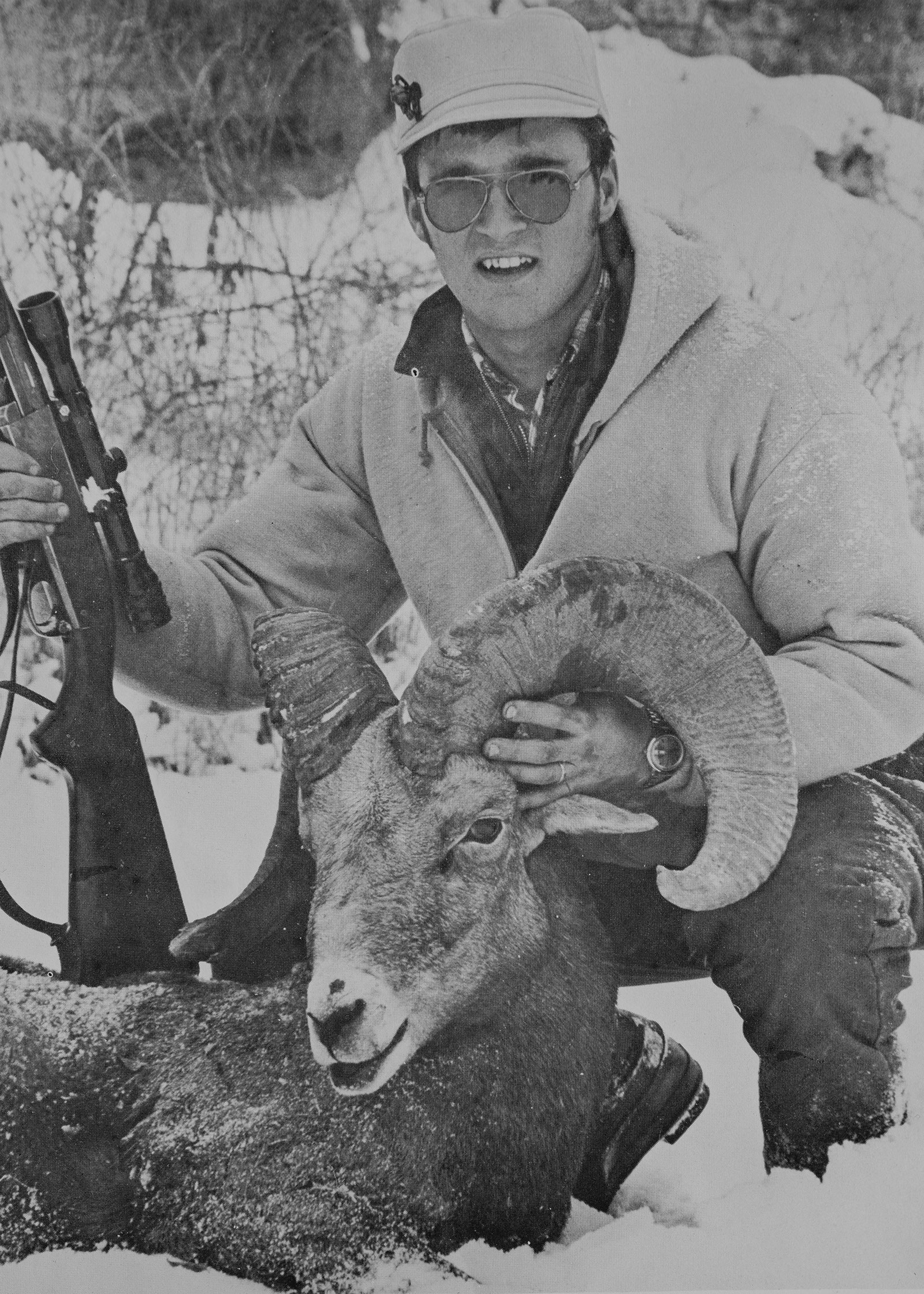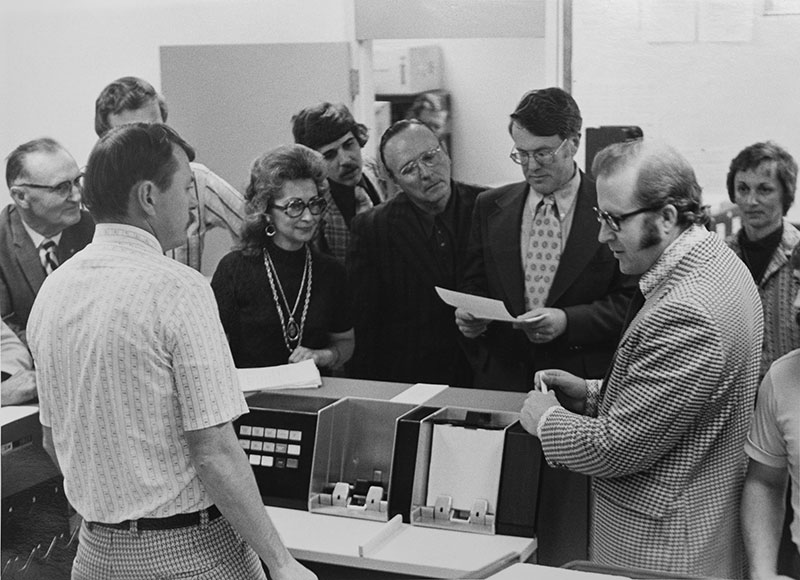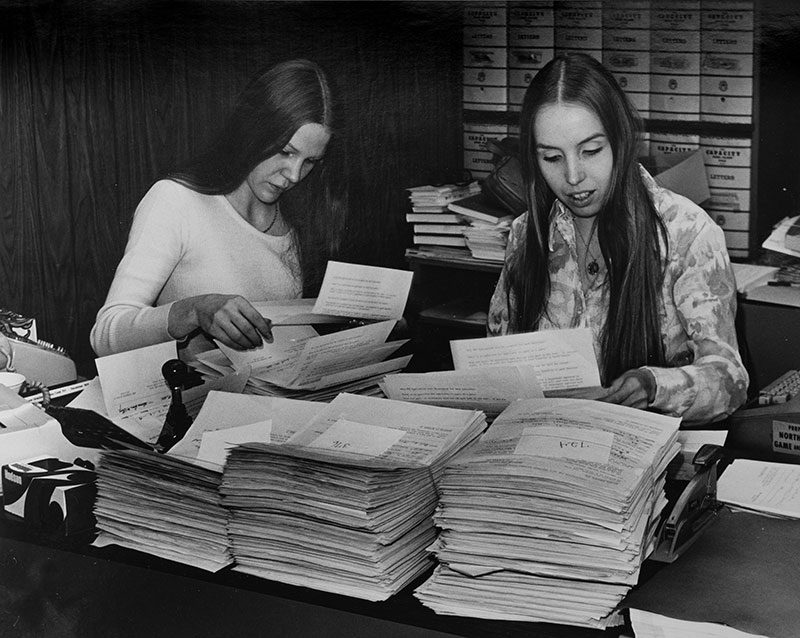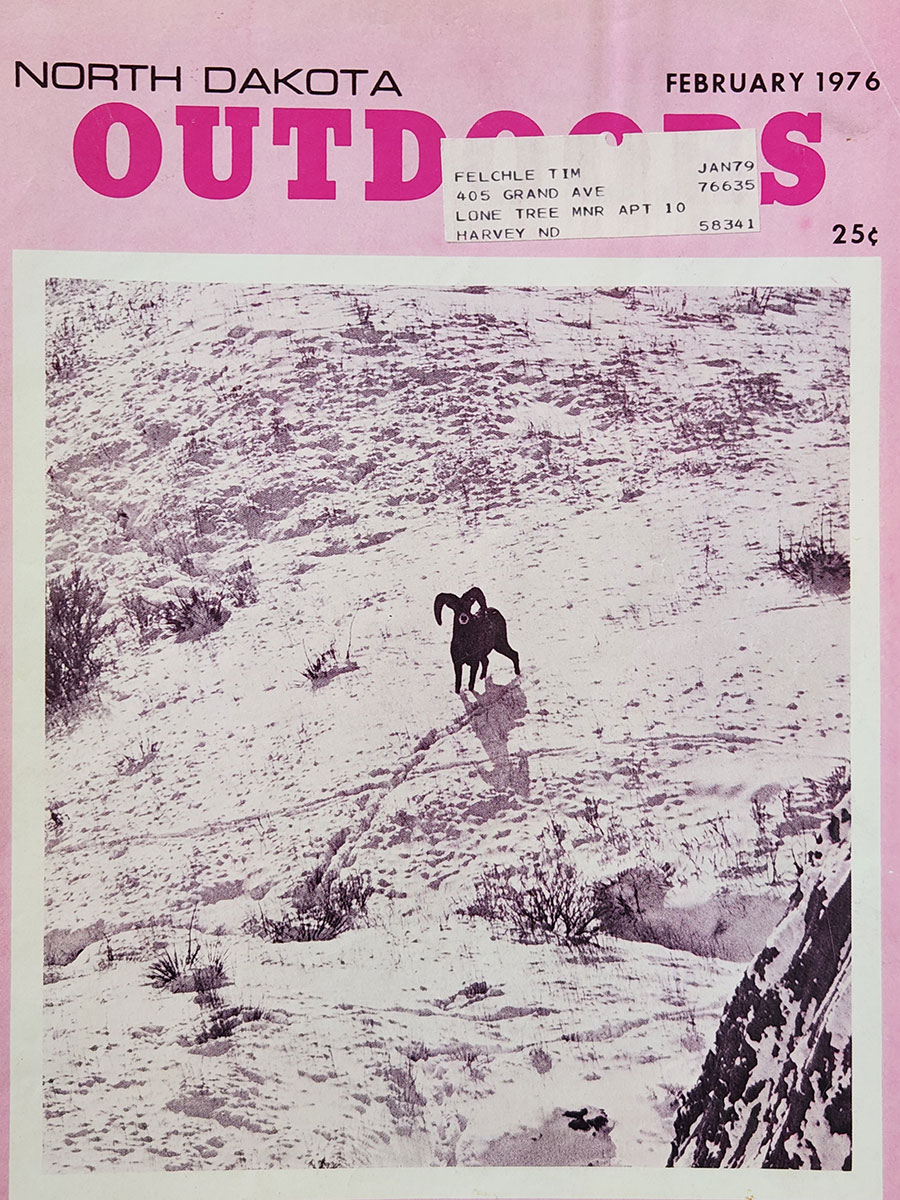50 Years Later
Tim Felchle

Editor’s Note: North Dakota’s first modern bighorn sheep hunt was held 50 years ago, nearly two decades after the Game and Fish Department reintroduced these animals into the badlands. Tim Felchle, born and raised in central North Dakota, was one of 12 lucky hunters to receive one of the once-in-a-lifetime licenses. Felchle, a recent North Dakota State University graduate in engineering at the time, was living with his wife in Harvey and working for the U.S. Bureau of Reclamation when he received the good news in 1975. This is his story.
State lawmakers passed Senate Bill 2210 a half-century ago, which opened the door for the first modern-day bighorn sheep hunting season in North Dakota. The 12 once-in-a-lifetime licenses were issued by lottery and those fortunate to draw were required to be accompanied by a game warden or other Game and Fish Department personnel to make certain each hunter harvested a legal-sized ram.
During the summer of 1975, I remember sitting in our apartment filling out my application to beat the June 30 deadline. Game and Fish Department officials indicated the drawing would be held in early November and all successful applicants would be notified by Nov. 14. As the odds would be high, I told my wife getting drawn would be like finding a needle in a haystack. All told, it should be noted that more than 2,800 hunters applied for those dozen licenses.
Because the Game and Fish Department didn’t have a computer at the time capable of holding such a large, random drawing, the drawing was conducted by Central Data Processing located in the State Highway Department building.
I was working as an inspector on a construction site in early November when the drawing was held and the successful applicants were contacted. However, I was unaware that the Game and Fish Department had moved up the drawing about a week earlier than planned.

A total of 2,852 applications were received by the Game and Fish Department for the 1975 bighorn sheep season. Wilbur Boldt, Department deputy commissioner, read off the names of the lucky applicants.
After the drawing was held, my field supervisor drove up and congratulated me for being able to go sheep hunting in North Dakota.
I told him I would soon know as the drawing was originally scheduled for Nov. 14. But he said he had just heard my name announced on the radio along with 11 other successful applicants.
On the way home from the job site, I listened closely to the radio and, yes, my name was announced.


